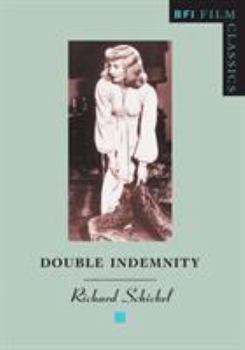Book Overview
A new kind of film emerged from Hollywood in the early 1940s, thrillers that derived their plots from the hard-boiled school of crime fiction but with a style all their own. Appearing in 1944, 'Double Indemnity 'was a key film in the definition of the genre that came to be known as film noir. Its script creates two unforgettable criminal characters: the cynically manipulative Phyllis Dietrichson (Barbara Stanwyck) and the likeable but amoral Walter Neff (Fred MacMurray). Billy Wilder's brilliant direction enmeshes them in chiaroscuro patterns, the bright California sun throwing shadows of venetian blinds across dusty rooms, shafts of harsh lamplight cutting through the night. Richard Schickel traces in fascinating detail the genesis of the film: its literary origins in the crime fiction of the 1930s, the difficult relations between Wilder and his scriptwriter Raymond Chandler, the casting of a reluctant Fred MacMurray, the late decision to cut from the film the expensively shot final sequence of Neff's execution. This elegantly written account, copiously illustrated, confirms a new the status of 'Double Indemnity' as an undisputed classic.
Format:Paperback
Language:English
ISBN:0851702988
ISBN13:9780851702988
Release Date:October 1992
Publisher:British Film Institute
Length:72 Pages
Weight:0.34 lbs.
Dimensions:0.2" x 5.3" x 7.5"
Customer Reviews
3 ratings
A Good Study of a Great Film
Published by Thriftbooks.com User , 22 years ago
Overall, Schickel's short monograph on Wilder's DOUBLE INDEMNITY is a nice piece of work. The information on Wilder's collaboration with the somewhat difficult Raymond Chandler is particularly well researched and well presented. Wilder is, after all, a writer's director, the way that John Ford is a director's director or Sergei Eisenstein, an editor's director. When film critic Andrew Sarris downgraded Wilder in his book THE AMERICAN CINEMA, it is because he could not understand that a director can be an artist while lacking a distinctive visual style. If Wilder's art comes out primarily during the scripting phase of the process, the resulting film can be just as successful -- especially if you have a great veteran like John B. Seitz behind the camera.And there is no doubt that DOUBLE INDEMNITY is a masterpiece. It is a complex work bringing together Billy Wilder's bemused street smarts, James M. Cain's corrosive venom, and Raymond Chandler's poetic noir dialogue.My only complaint with this monograph is that Schickel spent very little time on Cain's original novel except to pan it in passing. Granted that Chandler and Wilder improved on the original, the original is still one of the classic noir novels and deserves more than a passing nod. Secondly, Schickel just mentions in passing an article on screenwriting written by Chandler and doesn't even bother footnoting it. I finally tracked down the article in the second volume of the outstanding Library of America set of Chandler's work (which, by the by, also includes the complete film script for DOUBLE INDEMNITY). Chandler was obviously very down on screenwriting. Like many writers, he assumed that the script was THE key element of the film, and that writers should be treated with greater deference. After reading it, I still think the world of Chandler, but I feel all the more respect for Wilder for how he handled his somewhat cranky associate.
First class piece of film criticism
Published by Thriftbooks.com User , 25 years ago
Schickel is not a great film writer, although he is very influential. He gives an excellent introduction to the Wilder classic Double Indemnity and gives a good background to the film. Schickel could have done more and looked at the various interpretations of the film, but he is content to keep it focussed on its history.
Superb, well-researched study of noir classic
Published by Thriftbooks.com User , 26 years ago
Double Indemnity is perhaps the best film noir of all; and this is perhaps the best volume in the entire BFI series of monographs on classic (and modern classic) films. Schickel's study includes the usual (for the series) personal appreciation of the film and the way it helped create the genre (Maltese Falcon and Citizen Kane set the tone and the look; Double Indemnity contributed the central iconic character of noir, the two-timing blonde, and it wasn't until she was added to the mix that the genre took off). But it's also a solid job of research, detailing the work process of Wilder and his often-frustrated collaborator Raymond Chandler, the way in which they turned Cain's prose into speakable dialogue (in the process improving almost every aspect of the original), and most intriguing of all, outlining the film's original ending, in which death in the electric chair paid off the theme of mechanized people in a mechanized society riding an assembly line to doom.






